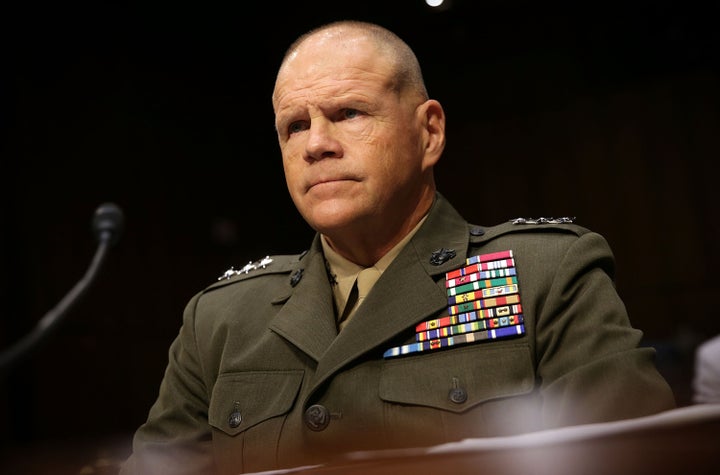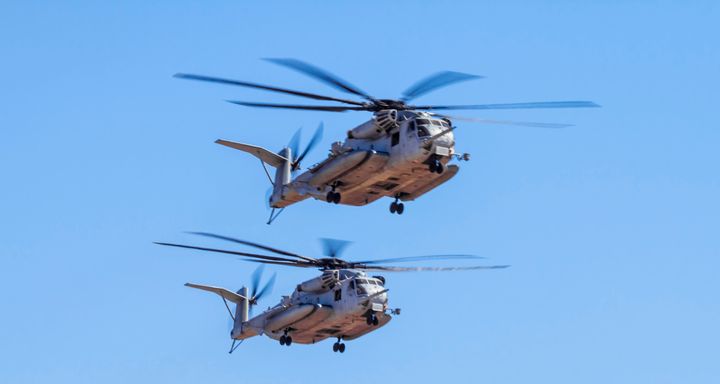The two Marine Corps CH-53 helicopters that collided off the coast of Hawaii earlier this year, killing all 12 crew members, are part of a family of aging marine aircraft hardest hit by maintenance and readiness shortfalls, according to the Corps' highest-ranking officer.
"In general, across the Marine Corps aviation enterprise we have challenges," Marine Corps Commandant Gen. Robert Neller told a Senate panel Wednesday. "I would say the CH-53 community is probably, right now, the most challenged."
As Military.com first reported, Neller cites maintenance backlogs and a shortage of available aircraft as major issues the CH-53 fleet faces.
"When you don't have enough airplanes to fly, then your flight hours go down and it becomes difficult to maintain your currency," he said during the hearing.

The two CH-53E Super Stallion helicopters collided Jan. 14 during a nighttime training exercise off the north shore of the Hawaiian island of Oahu. After a massive weeklong search, the Corps declared the 12 missing marines dead Jan. 21.
During Wednesday's subcommittee hearing, Sen. Dick Durbin (D-Ill.) brought up the fatal accident, as well as the fact that the squadron's commanding officer, Lt. Col. Edward Pavelka, was fired just three days prior to the crash. The Marine Times reported Pavelka was removed after senior officials determined he did not keep the unit operating at acceptable standards.
Durbin said he didn't want to dwell on Pavelka being relieved of his duties, but rather figure out how the subcommittee can do a better job of helping to protect against such tragedies.
"If our budget is not designed to prepare for readiness, to protect the lives of the Marines and sailors and others, then we are falling far short of our responsibility," Durbin said.

In the case of the CH-53, Neller said it's a "parts and repair" issue. And he recognized the Marine Corps probably kept the aircrafts "in the theater a little bit too long."
Neller added that the Corps is in the process of replacing every model type series in its fleet. The CH-53, however, will be the last, eventually replaced by the CH-53K, which is currently in development and testing, he said.
In an email last month to The Huffington Post, Corps spokeswoman Capt. Sarah Burns said that while the CH-53K King Stallion is "the future of Marine Corps rotor wing heavy lift," it won't reach full operational capability until 2029. So for now, the Corps is working to get its CH-53 fleet to the optimal readiness rate, she wrote.
Neller said during Wednesday's hearing that officials have not yet determined what caused the deadly crash in Hawaii, and efforts to recover pieces of the two aircraft are ongoing.
"They're on the north shore of Hawaii, which this time of year is big waves and swells, so there's a salvage ship there and they have been challenged to get out there and do their business," he said. "But we'll stay at it until we can get to the bottom of what happened."
Citing data from the Naval Safety Center, Military.com reported that aviation deaths in the Marine Corps in the last year have reached a five-year high, with 24 military fatalities in six different mishaps since January 2015.

